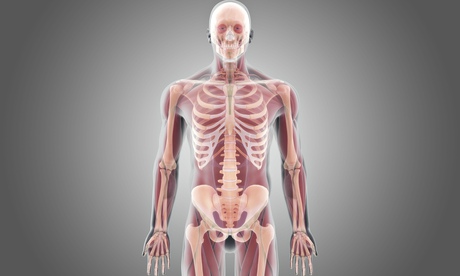
Of all health studies that focus directly on human beings, those that follow participants from birth to death are among the most compelling. Their sheer unwieldiness – keeping track and making sense of entire messy, unpredictable lifetimes – is staggering.
Last month, Google X – the company’s research wing – announced the launch of just such a “longitudinal” study, branded its “most ambitious and difficult science project ever”. Working with researchers from Duke and Stanford Universities, the Baseline study will collect genetic and molecular data from thousands of individuals over the course of their lifetimes in an attempt to create the cellular-level “fingerprint” of a healthy human being.
This quest to understand health through lifetime studies already underpins a huge area of research. And it is a field in which the UK is a world leader, home to large-scale projects that began as far back as the 1940s, as well as recent studies such as the Millennium Cohort Study (MCS), begun in 2000. Data collected from the MCS ranges from surveys of children’s teachers – inquiring about children’s behaviour, learning and their parenting – to saliva tests for levels of IgG, varicella zoster virus, Epstein-Barr virus, norovirus and adenovirus. Measures of height, weight, body fat, allergies, illnesses and cognitive ability will be taken at designated stages.
And also in the UK, the soon-to-begin Life Study is recruiting women and their partners who will be giving birth at Queen’s Hospital in Romford between 2014 and 2018. Further recruitment drives will follow in Leicester and Liverpool. Those interested can sign up online at lifestudy.ac.uk.
This “womb to tomb” study will be the first in the world to begin before children are even born. Following participants through adulthood and into old age, researchers will focus on how demographic and socioeconomic factors are linked to mental and physical health. Once recruited, participants are guaranteed lifelong confidentiality (so, for all you know, your neighbour or colleague might be signed up already) and can drop out of the study at any point. Tests will be plentiful – and any results that ring alarm bells or which may have health implications will be sent to participants’ GPs.
The longest-running British study is the National Survey of Health and Development (NSHD). Following 5,362 men and women since their birth in March 1946 – with 21 data collections to date – the study is still yielding important results. When the NSHD began, food was still rationed and almost 50% of families didn’t have a bathroom. It was greeted with excitement and idealism, the participants hoping that they would be part of much-needed social reform. And from its very beginning, it had an impact: a very early finding in the 1940s was the revelation that just 20% of women surveyed had received any kind of pain relief during childbirth. The outcry triggered by this led to a change in regulations for the administration of anaesthesia.
While there was already consensus in the medical establishment that a child’s home environment had long-term effects on their health as adults, without studies such as the NSHD the nuances of this might have remained elusive. For instance, a 2013 analysis revealed that 60- to 64-year-olds who began life at the top of the socioeconomic spectrum performed 7–20% better in physical and cognitive tests (such as expiratory volume, handgrip strength and verbal memory score) than their less wealthy compatriots.
As the NSHD participants reach old age, it has become starkly obvious that, although an increase in standards of living can help, health never truly recovers from a poor start in life. Even participants’ chances of surviving until the age of 60 was influenced by childhood advantage or disadvantage.
As time has gone on, methods used in these studies have evolved. The consent process is now far more rigorous and, while participants’ data has always been protected, there is an increased emphasis on privacy. More practically, the devices used for measuring function and activity level are now portable and cheap enough to take into field surveys so that, for example, blood pressure or glucose levels can be monitored 24 hours a day. Measures such as eye function can be taken via a mobile phone and cognitive testing carried out on a computer rather than on paper.
New technology has also seen the collating of data move from punch-card machines to computer algorithms and the ability to analyse samples has been transformed, meaning a wider range of measures (such as hormonal and genetic markers) can now be taken into account.
But what is it like to actually work on these epic studies? “It feels good to be part of a large, long-term investment of benefit to society,” says NSHD director Professor Diana Kuh. “We’re building on a legacy going back to the early postwar period, having the privilege to test hypotheses that are only possible because of what previous investigators collected – and enhancing the study so that the next generation can do the same. It’s a bit like having children: you want that investment to pay off not just in the short-term but in the long-term too, so you can look back and say you were part of that.
“Metabolomics [the study of cellular-level chemical processes] now allows us to get 300 measures from a sample, whereas we once got two or three. We’re hoping this will allow us to better understand the biological pathways to illness. However, we still have to ask the right sort of questions.”
These questions are likely to revolve around the socioeconomic factors that have been shown time and time again to be so crucial to health. Google’s Baseline study is fascinating with its dazzle of big technology and cutting edge science, but no cellular-level fingerprint of health will be worth its salt without taking into account that colossal determiner of wellbeing: poverty. All the more reason to make sure the right questions are asked.

